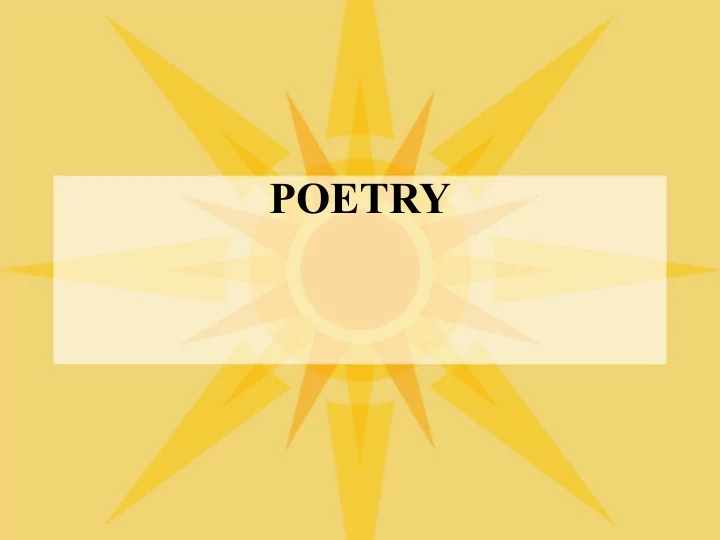

POETRY
The Nature of Poetry “Poetry focuses more on connotative, emotional, or associate meaning and conveys meaning more through suggestion, indirection, and the use of metaphor, symbol, and imagery than prose does” ( MLM 131).
The Elements of Poetry Speaker and Tone Diction and Syntax Figures of speech Sound, rhythm, and meter Theme
Identify the Speaker and Tone The voice we hear in a poem is often a “persona”—a mask that could be the poet’s real voice or a complete fiction. Look at the speaker’s t one —the attitude. Sarcastic? Serious?
Be Aware of the Complexities of Diction and Syntax Diction —choice of words. Connotation— use imagery and figures of speech. “Love.” Denotation—dictionary meeting. “Love.” Syntax —the order of words
Major Figures of Speech Include Metaphor and Symbols Metaphor —comparison without “like” or “as.” Simile —comparison with “like” or “as.” Symbols —suggest general ideas. Rarely point in one direction.
Sound , Rhythm , and Meter Work Together To Give a Poem a Psychological Force Ways to enforce the sound : Free verse— poems do not use rhyme. Alliteration— repetition of consonant sounds. Assonance---repetition of vowel sounds. Rhythm —beat of the poem Meter —way of scanning poetry
Don’t Expect a Poem’s Theme to be Straightforward
If You Argue a Point, Make Sure You Have Evidence
Recommend
More recommend